The Bloody True Story of the Real 100th Bomb Group in ‘Masters of the Air’
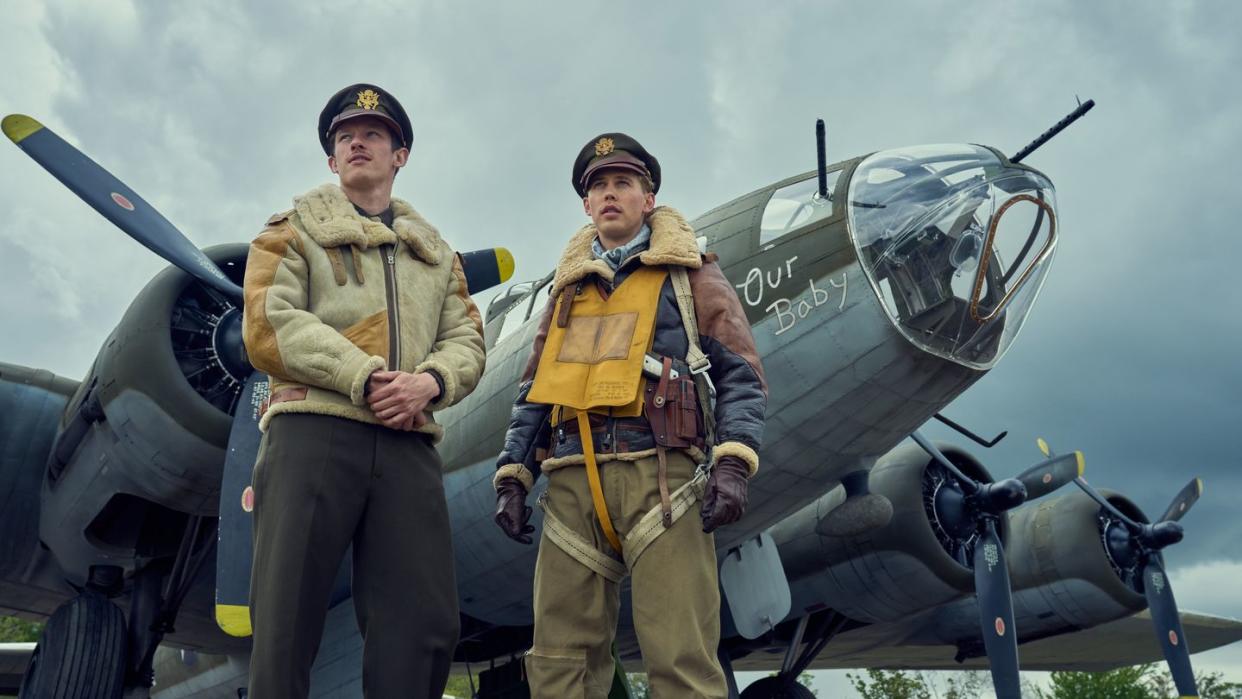
- Oops!Something went wrong.Please try again later.
"Hearst Magazines and Yahoo may earn commission or revenue on some items through these links."
Editor’s Note: This article contains spoilers about events related to the limited series Masters of the Air.
As the U.S. Eighth Air Force’s 100th Bomb Group began training for World War II in 1942, its first commander, Colonel Darr H. Alkire, painted a sobering picture of what lay ahead. “Don’t get the notion that your job is going to be glorious or glamorous… you’ve got dirty work to do, you might as well face the facts,” he told his pilots. “You’re going to be baby-killers and women-killers.”
The civilian toll of aerial warfare was just one of the horrors faced by members of the “Bloody 100th,” whose harrowing stories are the subject of the 2024 Apple TV+ limited series Masters of the Air. The show, produced by Steven Spielberg and Tom Hanks, stars Austin Butler, Callum Turner, and Barry Keoghan.
All nine episodes of the war drama are now available following the season finale on March 15. That same day, the streaming service also released a one-hour documentary titled The Bloody Hundredth, which features interviews and video footage of the real 100th Bomb Group pilots portrayed in the show.
Based on a 2007 book of the same name by Donald Miller, Masters of the Air tells the story of the B-17 combat unit that aided Allied troops across Europe throughout the later stages of the war. The 100th contributed to some of the most important battles of the conflict, including the 1944 D-Day invasion. However, those efforts often came at a heavy cost, earning the group its ominous nickname and an important place in military history.
The 100th Bomb Group had a rocky start
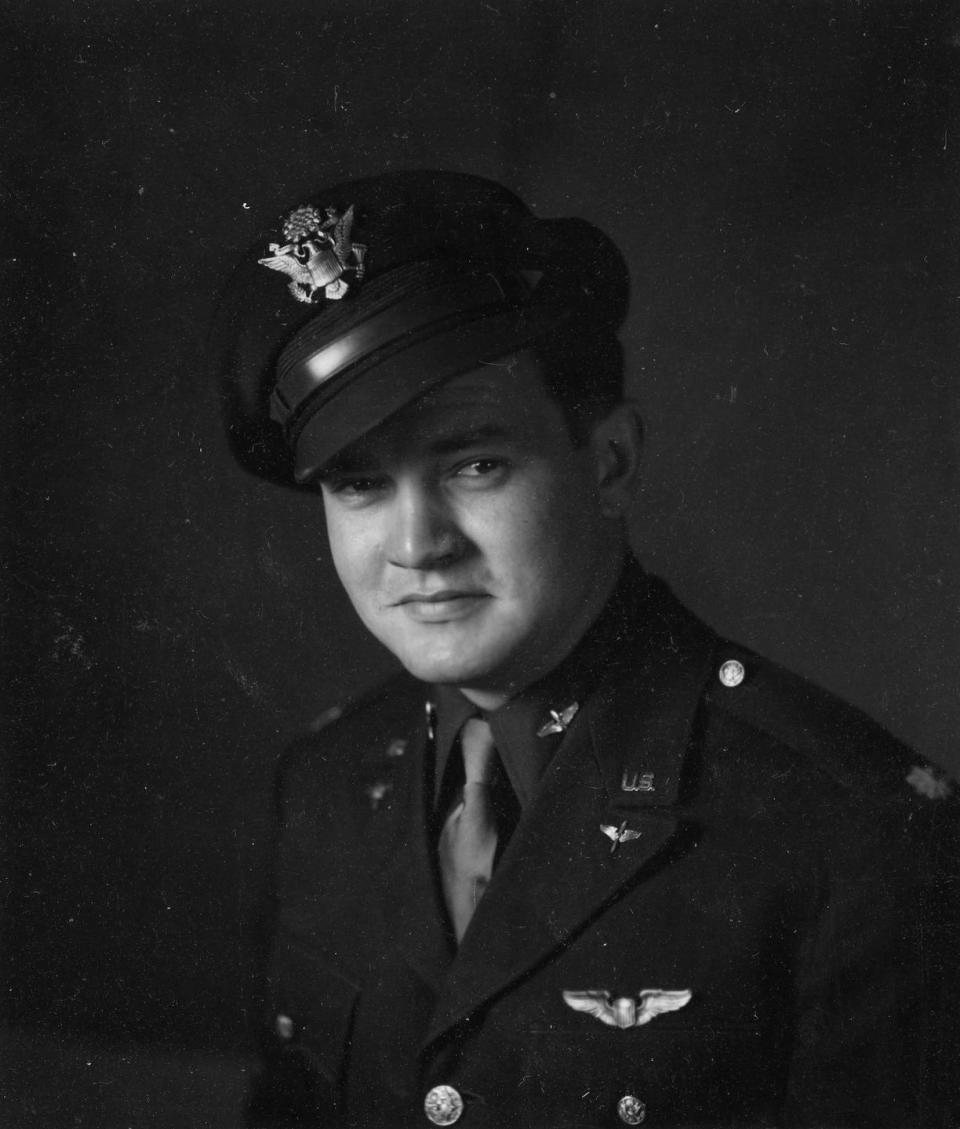
The 100th Bomb Group was activated on June 1, 1942, and began assembling at the Walla Walla Army Air Base in Washington. The unit received its first shipment of B-17s, known as “Flying Fortresses,” that November. Among the group was Operations Officer John Egan (played by Turner) and Captain Gale “Buck” Cleven (played by Butler), the 350th Bomb Squadron commanding officer.
According to the National World War II Museum, members of the 100th were subject to an uncoordinated training regimen—and some became overconfident in their flying skills. As a result, the group’s first mission, albeit a practice run, was a complete failure.
On April 20, 1943, 21 crews were supposed to fly roughly 1,300 miles from Kearney Field, Nebraska, to Hamilton Field in California as a long range exercise. Instead, three planes ended up landing in Las Vegas, while another pilot took his bomber in the opposite direction to Smyrna, Tennessee. Needless to say, Colonel Alkire was relieved of his post and replaced by Colonel Howard M. Turner. After some remedial training, the unit became operational, and 36 bombers and crews arrived at base in Thorpe Abbotts, United Kingdom, on June 9.
Pilots were quickly reminded of the danger they faced when, during the 100th’s first combat mission on June 25, the group lost three planes, and 30 crew members were either killed or went missing in action.
Despite the skill of pilots like Egan and Cleven, whose talent and bravado made them popular among their comrades, the war would continue to exact a great toll on the 100th.
The Raid of Regensburg and Schweinfurt
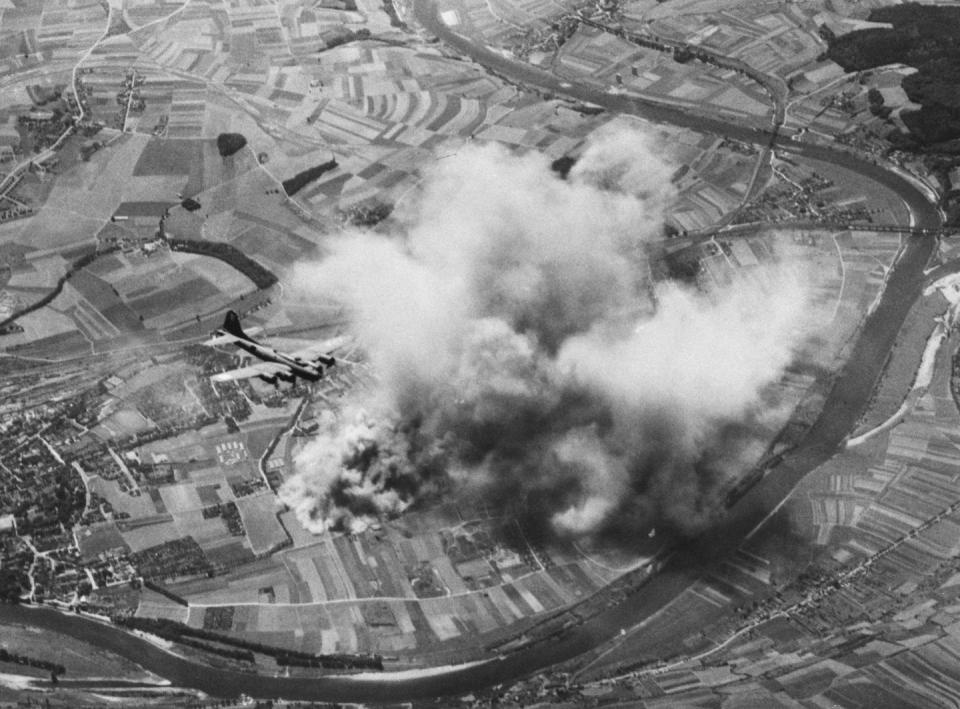
One of the first missions to truly showcase the group’s courage in the skies was a bombing raid of two German cities, Regensburg and Schweinfurt, in 1943. Regensburg was home to the Messerschmitt factory, a key facility for Germany’s air forces, while Schweinfurt was an important hub for ball bearing production. The hope was that the mission would cripple production for the German war effort.
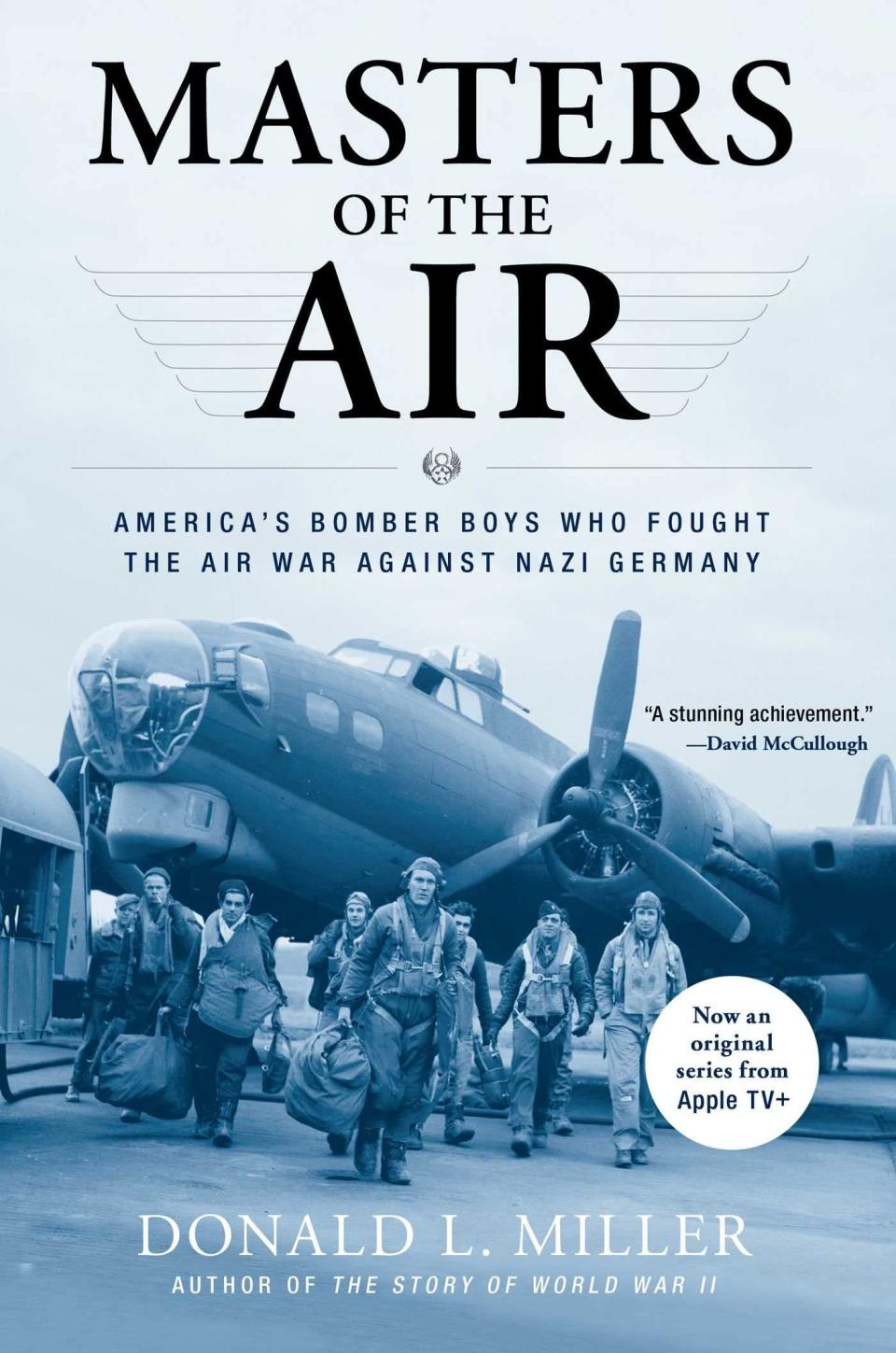
Masters of the Air by Donald L. Miller
amazon.com
$17.39
On August 17, the Eighth Air Force launched its attack. “At the beginning, you think, ‘That’s great!’ We all wanted to go,” 100th bombardier Joseph Armanini said later. “We thought it was going to be a great run. But, then we got into it, hell, it turned out to be a disaster because they shot the living Christ out of us.”
The 100th helped form the low and tailing squadron of the formation, a particularly precarious position as German fighters usually attacked this area first. It eventually earned the nickname “Purple Heart Corner.”
According to the American Veterans Center, almost one-fifth of the 376 planes that flew in the raid were shot down. Of the 22 aircraft belonging to the 100th Bomb Group, the National World War II Museum cites that nine were destroyed.
Given the number of casualties, the mission was only moderately successful. The Regensburg factory sustained major damage, but Schweinfurt was left relatively unscathed. The raid did influence the bombing strategy of the Eighth Air Force, as it illustrated the importance of long range fighter escorts to future missions. However, such planes wouldn’t be available until the following year.
Robert Rosenthal’s heroics at Münster
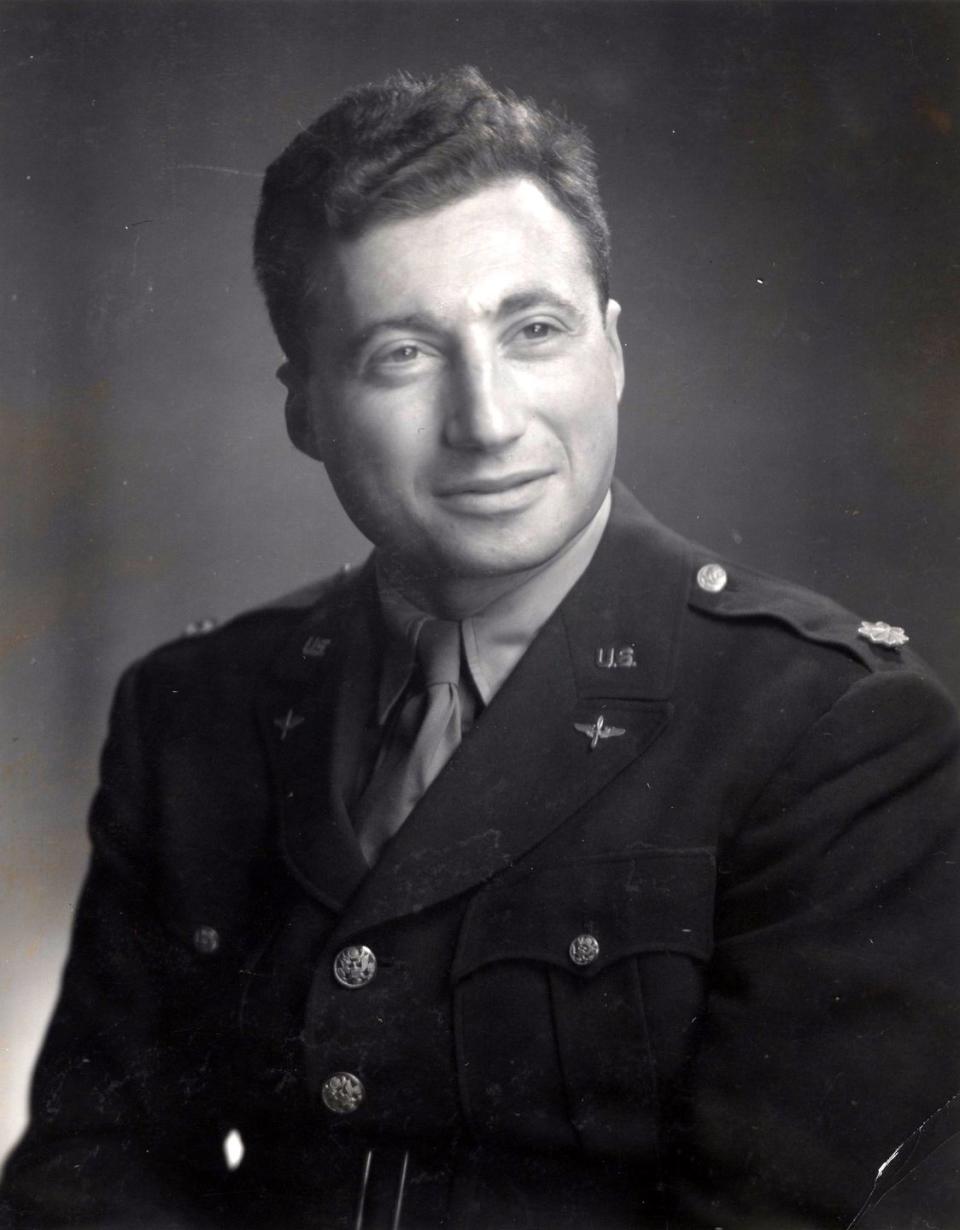
As brutal as the Regensburg and Schweinfurt run was for the 100th, the group experienced even more catastrophic losses less than two months later.
Whereas the Eighth Air Force had previously focused its efforts on industrial or military targets, the October 10, 1943, raid of Münster was different: The targets were German civilians. The focal point was the medieval cathedral at the center of the city, which forces would attack as Sunday mass drew to a conclusion around noon.
While many of the pilots were horrified at the thought of killing innocent people, others saw a chance to honor their fallen friends. “Others who had lost close friends in the past few raids joined in the cheering because here was a chance to kill Germans, the spawners of race hatred and minority oppression,” Egan said. “It was a dream mission to avenge the death of a buddy.” The attack decimated Münster, with an estimate of more than 700 civilian casualties.
Egan, however, never even reached Münster. He and co-pilot John Brady were forced to jump out of their plane, the M’lle Zig Zag, as German forces pummeled the B-17 formation over the Ruhr Valley. Egan was captured and taken to Stalag Luft III, a prisoner of war camp in Poland, where he remained for the next year and a half.
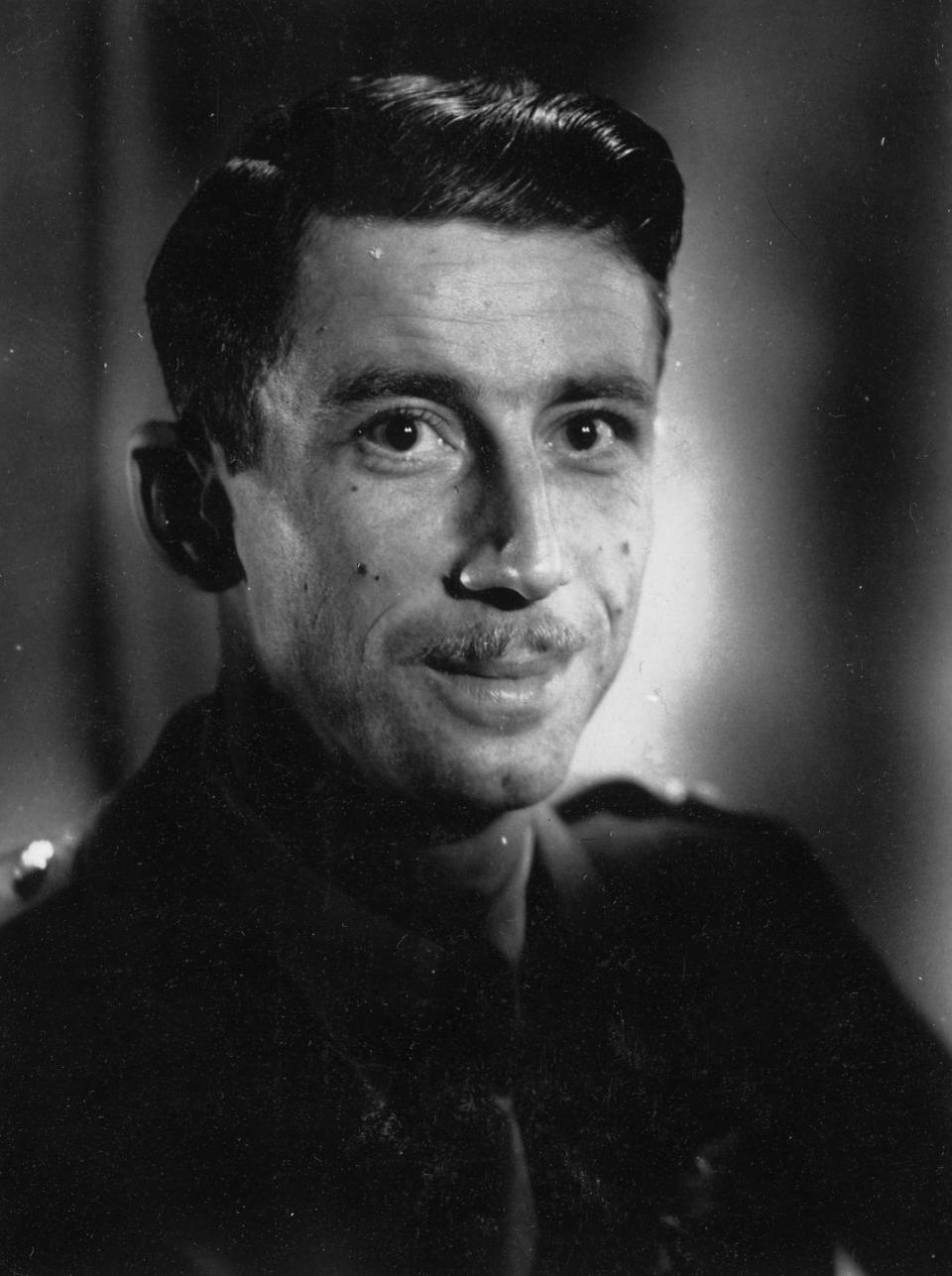
When he arrived at Stalag Luft III, he was greeted by Cleven—a POW himself after his plane was shot down days earlier on October 8 during a mission to Bremen.
Survival, even as a prisoner of war, wasn’t the fate that many of Egan and Cleven’s comrades met. Of the 13 aircraft belonging to the 100th, only one returned to the dispatch point: the Royal Flush piloted by Robert “Rosie” Rosenthal (played in Masters of the Air by Nate Mann). Rosie, who trained as a lawyer prior to the war, had dropped his payload despite losing two engines and his plane’s oxygen system.
Rosenthal became a legendary member of the 100th. He took part in 52 missions and was shot down twice but evaded capture. But by late 1943, the unfortunate legacy of the Bloody 100th had been cemented.
The 100th flew in D-Day and the Battle of the Bulge
Despite its cursed reputation, the 100th continued to fly throughout the war and did play a role in several crucial battles.
According to the 100th Bomb Group Foundation, the unit led a bombing of Rukjan, Norway, shortly after the Münster attack. This hindered the manufacturing of heavy water for Germany’s effort in the race to build a nuclear weapon. Then, in March 1944, the group participated in multiple attacks against Berlin, earning a Presidential Unit Citation.
Over the weeks that followed, the 100th hit bridges and gun positions in preparation of an upcoming invasion of Normandy. On June 6, 1944, more than 150,000 Allied soldiers landed on the occupied beaches of northern France as part of Operation Overlord and completely turned the tide of the war. The 100th flew three missions on D-Day in support of ground troops.
That December, the unit helped attack communication centers and airfields during the Battle of the Bulge in the Ardennes region—considered the Axis powers’ last major offensive in the war. According to Arlington National Cemetery, the United States lost around 19,000 troops in the fighting.
On April 20, 1945, the 100th flew its final combat mission to Orianenburg, just outside Berlin, and suffered no casualties.
All told, the 100th flew 306 missions over the course of the war. A total of 757 men were either killed or went missing in action. Thanks to Masters of the Air, the bravery of pilots like Egan, Cleven, Rosenthal, and the rest of the group will now be immortalized on the small screen.
Watch Masters of the Air on Apple TV+
All nine episodes of Masters of the Air are now streaming on Apple TV+. The series stars Austin Butler as Gale Cleven, Callum Turner as John Egan, and Barry Keoghan as Lt. Curtis Biddick.
Tom Hanks, who also serves as the narrator of the newly released documentary The Bloody Hundredth, told Extra TV that Masters of the Air aims to highlight the individual conflicts and triumphs of the pilots and crew who made up the 100th, not simply the group’s unfortunate connection to tragedy and death.
“What everybody went through back in the day that this takes place is no different than the individual choices we all face right now, the same brand of struggles,” Hanks said. “I hope that people are watching at home and do the same thing that I did when I was a kid, and I still do, is ponder, ‘What would I do if the same thing was asked of me today?’”
You Might Also Like

